Nombre total de pages vues
03/08/2020
02/08/2020
Damia Bouic : Two Worlds, One Sun - Science & Technology - Astronomy picture of the day
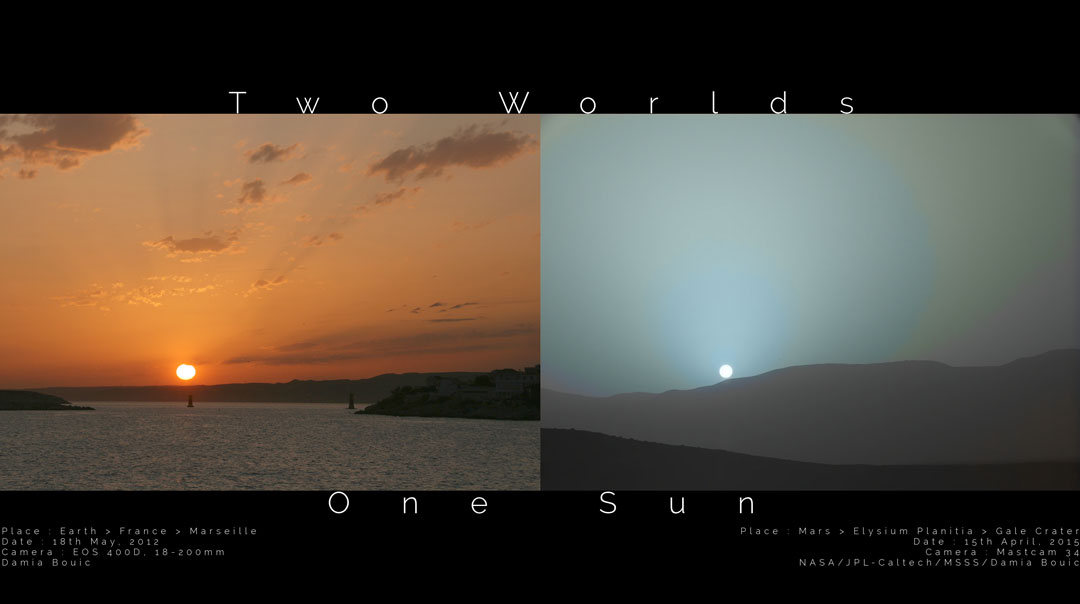
Left Image Credit & Copyright: Damia Bouic;
Right Image Credit: NASA, JPL-Caltech, MSSS; Digital processing: Damia Bouic
Explanation: How different does sunset appear from Mars than from Earth? For comparison, two images of our common star were taken at sunset, one from Earth and one from Mars. These images were scaled to have same angular width and featured here side-by-side. A quick inspection will reveal that the Sun appears slightly smaller from Mars than from Earth. This makes sense since Mars is 50% further from the Sun than Earth. More striking, perhaps, is that the Martian sunset is noticeably bluer near the Sun than the typically orange colors near the setting Sun from Earth. The reason for the blue hues from Mars is not fully understood, but thought to be related to forward scattering properties of Martian dust. The terrestrial sunset was taken in 2012 March from Marseille, France, while the Martian sunset was captured in 2015 by NASA's robotic Curiosity rover from Gale crater on Mars. Last week a new rover and a helicopter -- onboard Mars 2020 -- launched for Mars.
01/08/2020
Chad Leader : The Elephant's Trunk Nebula in Cepheus - Science & Technology - Astronomy picture of the day
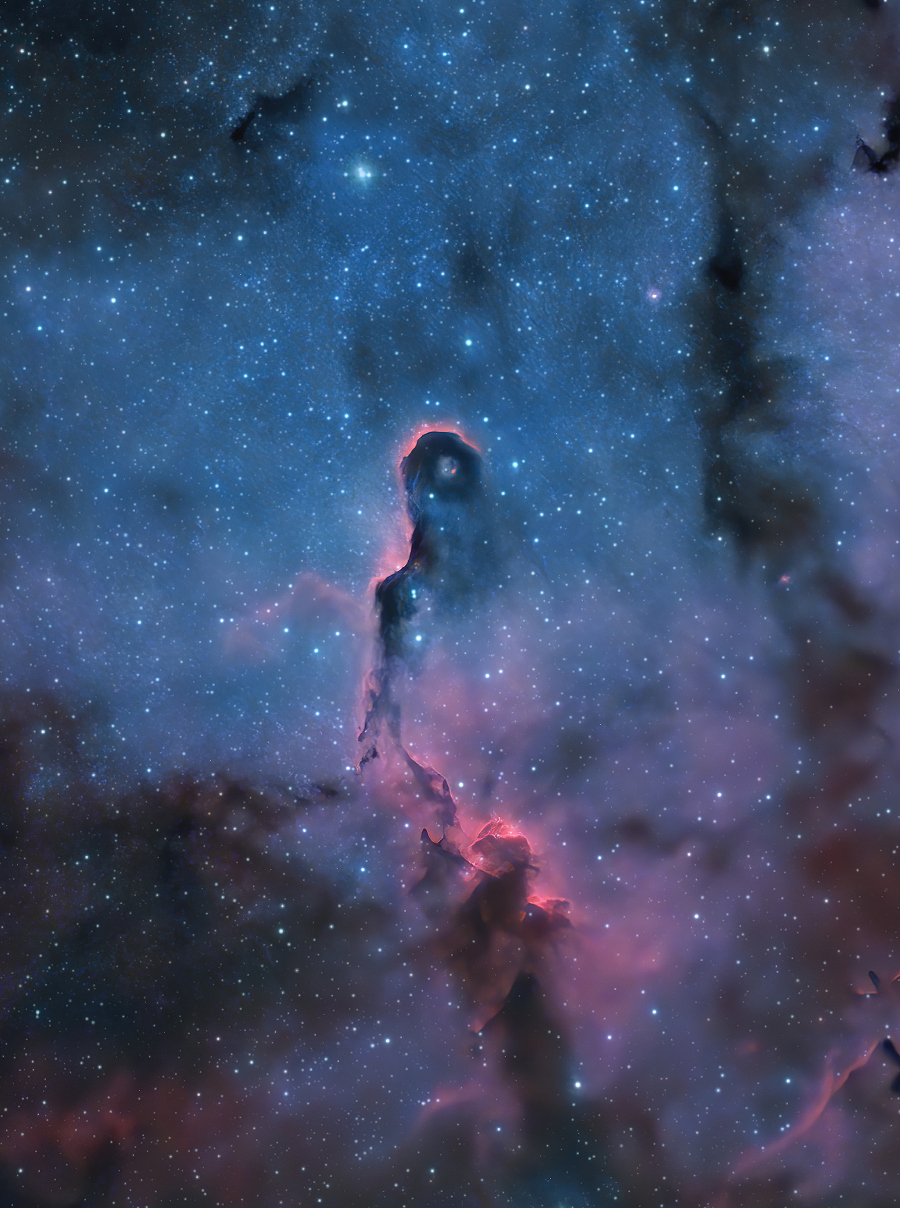
Image Credit & Copyright: Chad Leader
Explanation: Like an illustration in a galactic Just So Story, the Elephant's Trunk Nebula winds through the emission nebula and young star cluster complex IC 1396, in the high and far off constellation of Cepheus. Also known as vdB 142, the cosmic elephant's trunk is over 20 light-years long. This detailed close-up view was recorded through narrow band filters that transmit the light from ionized hydrogen and oxygen atoms in the region. The resulting composite highlights the bright swept-back ridges that outline pockets of cool interstellar dust and gas. Such embedded, dark, tendril-shaped clouds contain the raw material for star formation and hide protostars within. Nearly 3,000 light-years distant, the relatively faint IC 1396 complex covers a large region on the sky, spanning over 5 degrees. This dramatic scene spans a 1 degree wide field of view though, about the size of 2 Full Moons.
30/07/2020
Jean-Luc Dauvergne : The Giants of Summer - (Science & Technologie - Astronomy picture of the day)
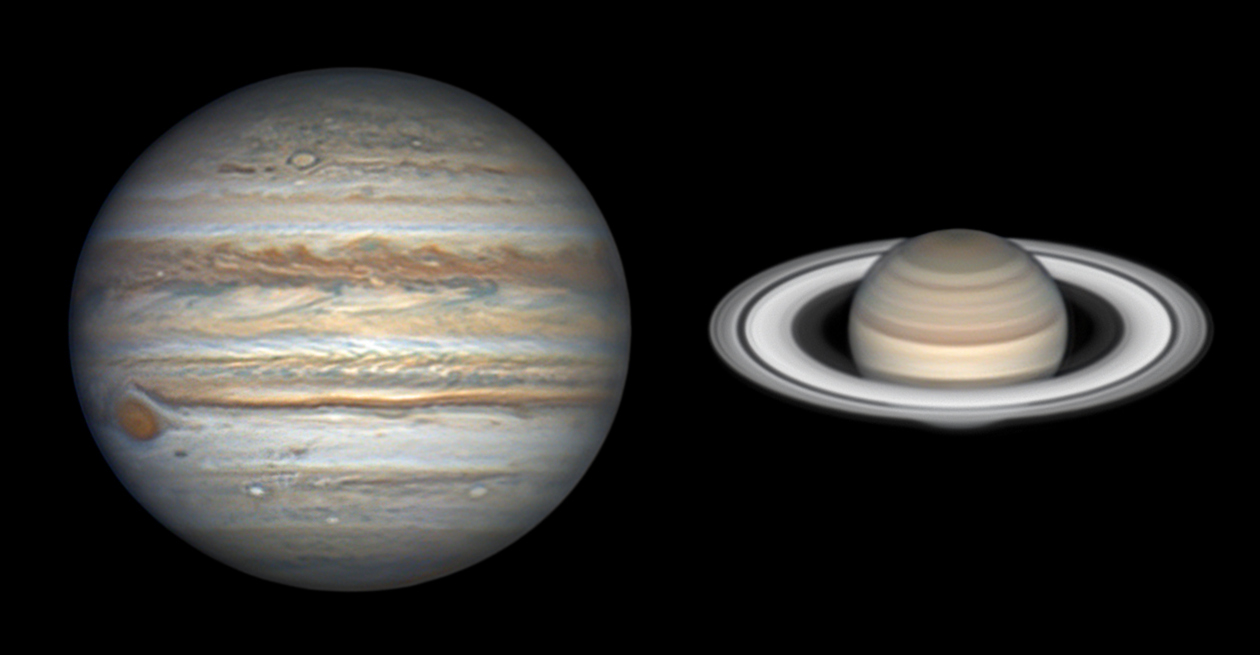
Image Credit & Copyright: Jean-Luc Dauvergne
Explanation: As Comet NEOWISE sweeps through northern summer skies, Jupiter and Saturn are shining brightly, near opposition. With Jupiter opposite the Sun on July 14 and Saturn on July 21, the giant planets are still near their closest to planet Earth in 2020. Sharing the constellation Sagittarius they are up all night, and offer their best and brightest views at the telescope. Both captured on July 22 from a balcony in Paris these two sharp telescopic images don't disappoint, showing off what the giant planets are famous for, Saturn's bright rings and Jupiter's Great Red Spot. These giants of the Solar System are worth following during 2020. On December 21, skygazers can watch the once-in-20-year great conjunction of Jupiter and Saturn.
28/07/2020
Observador - Portugal : Vacina contre Covid-19 ja està a ser testada nos Estados Unidos (Ciência & Tecnologia - Saude/Medecina)
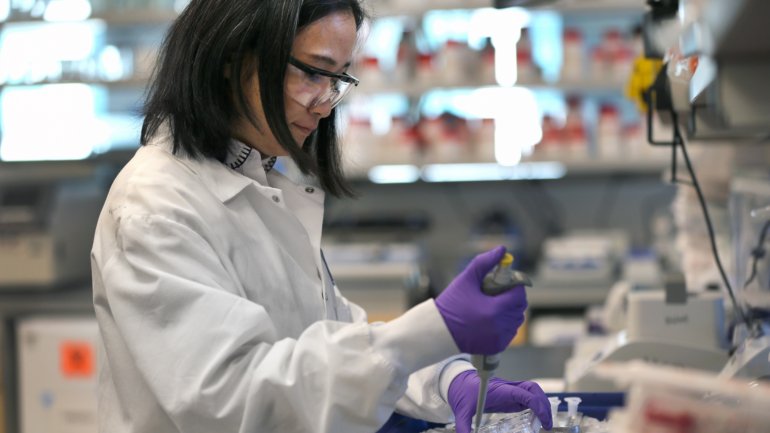
Na primeira fase do estudo, os testes mostraram que todos os voluntários apresentaram respostas imunes. O resultado preliminar foi publicado há duas semanas no New England Journal of Medicine e, apesar de desencadear efeitos secundários leves — fadiga, calafrios, dor de cabeça, dor muscular, dor no local da injeção — a resposta imunológica foi positiva.
Nessa altura, os testes foram feitos a apenas 45 adultos saudáveis, com idades entre 18 e 55 anos, que receberam duas vacinas com 28 dias de intervalo. Agora é diferente, com a fase final de testes a envolver 30 mil participantes, incluindo pessoas que estão em grupos de risco — metade recebendo a vacina, de facto, e a outra metade um placebo.
Anthony S. Fauci, o especialista em doenças infecciosas que integra o grupo de trabalhado criado por Donald Trump para lidar com a pandemia, disse em conferência de imprensa, citada pelo Washington Post, que este é “o lançamento de um evento verdadeiramente histórico na história da vacinologia”. Fauci prevê que em nos últimos meses do ano já seja possível saber se a vacina é ou não eficaz.
Em breve deverão começar também outros 30 mil testes em 120 locais por todo o mundo, feitos pela farmacêutica Pfizer, de acordo com o Washigton Post.
Ariel L. Cappelletti : NGC 6188: The Dragons of Ara (Astronomy picture of the day - Science & Technology)
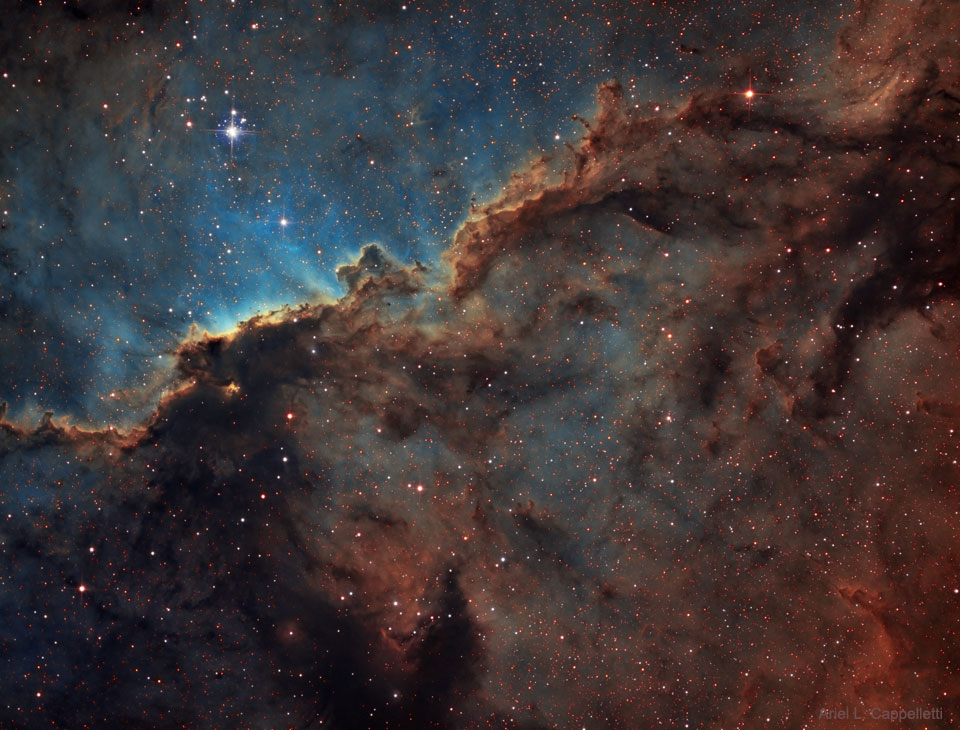
Image Credit & Copyright: Ariel L. Cappelletti
Explanation: Dark shapes with bright edges winging their way through dusty NGC 6188 are tens of light-years long. The emission nebula is found near the edge of an otherwise dark and large molecular cloud in the southern constellation Ara, about 4,000 light-years away. Born in that region only a few million years ago, the massive young stars of the embedded Ara OB1 association sculpt the fantastic shapes and power the nebular glow with stellar winds and intense ultraviolet radiation. The recent star formation itself was likely triggered by winds and supernova explosions, from previous generations of massive stars, that swept up and compressed the molecular gas. The featured image accumulated over 10 hours through a backyard telescope in Córdoba, Argentina and was false-colored using the Hubble palette highlighting emission from sulfur, hydrogen, and oxygen atoms in red, green, and blue hues. The field of view spans about four full Moons, corresponding to about 150 light years at the estimated distance of NGC 6188.
26/07/2020
Jeff Dai (TWAN) : Tianwen-1 Mission to Mars (Science & Technology - Astronomy picture of the day)

Image Credit & Copyright: Jeff Dai (TWAN)
Explanation: On July 23, this Long March 5 heavy-lift rocket rose into a blue morning sky from China's Hainan Island Wenchang Satellite Launch Center. The rocket carried an orbiter, lander, and rover to ask Heavenly Questions on the ambitious Tianwen-1 mission to Mars. In fact Tianwen-1 was the second of three missions scheduled for a July departure to the Red Planet. The United Arab Emirates launched its Amal (Hope) Mars probe on July 19. NASA's launch of its Mars Perseverance Rover from Cape Canaveral Air Force Station, USA is scheduled for July 30. That is the last planned Mars launch for 2020 though. The minimum-energy launch window for an expedition to Mars is coming to a close in 2020 and will reopen in 2022.
24/07/2020
Urs Leutenegger : MAGIC NEOWISE (Science & Technology - Astronomy picture of the day)

Image Credit & Copyright: Urs Leutenegger
Explanation: The multi-mirror, 17 meter-diameter MAGIC telescopes reflect this starry night sky from the Roque de los Muchachos European Northern Observatory on the Canary Island of La Palma. MAGIC stands for Major Atmospheric Gamma Imaging Cherenkov and the telescopes can see the brief flashes of optical light produced in particle air showers as high-energy gamma rays impact the Earth's upper atmosphere. On July 20, two of the three telescopes in view were looking for gamma rays from the center of our Milky Way galaxy. In reflection they show the bright stars of Sagittarius and Scorpius near the galactic center to the southeast. Beyond the segmented-mirror arrays, above the northwest horizon and below the Big Dipper is Comet NEOWISE. NEOWISE stands for Near Earth Object Wide-field Infrared Survey Explorer. That's the Earth-orbiting satellite used to discover the comet designated C/2020 F3, but you knew that.
23/07/2020
Korii : Les médicaments anti-âge (Science & Technologie - Santé/Médecine)
Une première vague de médicaments anti-âge est entrée dans sa phase de test sur des êtres humains. Ils ne vous feront –pour l'instant– pas vivre plus longtemps mais cibleront des problèmes de santé spécifiques liés à l'âge. Appelés les «sénolytiques», ces traitements suppriment certaines cellules que l'on accumule avec le temps.
De premiers résultats ont été observés sur des cas d'arthrites dégénératives, et d'autres molécules pourraient s'intéresser aux maladies des yeux, des poumons ou encore à Parkinson et Alzheimer.
Zixuan Lin : The Structured Tails of Comet NEOWISE - (Science & Technology - Astronomy picture of the day)

Image Credit & Copyright: Zixuan Lin (Beijing Normal U.)
Explanation: What is creating the structure in Comet NEOWISE's tails? Of the two tails evident, the blue ion tail on the left points directly away from the Sun and is pushed out by the flowing and charged solar wind. Structure in the ion tail comes from different rates of expelled blue-glowing ions from the comet's nucleus, as well as the always complex and continually changing structure of our Sun's wind. Most unusual for Comet C/2020 F3 (NEOWISE), though, is the wavy structure of its dust tail. This dust tail is pushed out by sunlight, but curves as heavier dust particles are better able to resist this light pressure and continue along a solar orbit. Comet NEOWISE's impressive dust-tail striations are not fully understood, as yet, but likely related to rotating streams of sun-reflecting grit liberated by ice melting on its 5-kilometer wide nucleus. The featured 40-image conglomerate, digitally enhanced, was captured three days ago through the dark skies of the Gobi Desert in Inner Mongolia, China. Comet NEOWISE will make it closest pass to the Earth tomorrow as it moves out from the Sun. The comet, already fading but still visible to the unaided eye, should fade more rapidly as it recedes from the Earth.
Inscription à :
Commentaires (Atom)
ASTRONOMY - Juno Flyby of Ganymede and Jupiter
2025 December 14 Juno Flyby of Ganymede and Jupiter Video Credit: NASA , JPL-Caltech , SWRI , MSSS ; Animation: Koji Kuramura , Geral...

-
2022 September 26 All the Water on Planet Earth Illustration Credit: Jack Cook, Adam Nieman, Woods Hole Oceanographic Institution ; Data ...
-
2025 May 11 The Surface of Venus from Venera 14 Image Credit: Soviet Planetary Exploration Program , Venera 14 ; Processing & Copyri...